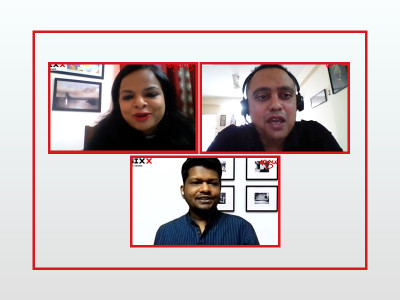Technology in the newsroom – How ready are we?
In the last one decade, technology has changed the world and the world of PR is no exception. High Internet penetration, growing use of mobile phones and the power of social media are just few instances as to how technology has impacted how people communicate and how messages are transmitted and consumed. Today, there are countless tools that let one do more and are specifically designed and created for the challenges that PR professionals are facing in a digitally transformed world.
Keeping in mind the emerging trends in technology and digital transforming the PR world, we had an interesting fireside chat as part of DIGIXX 2021 on ‘Technology in the Newsroom – How Ready Are We?’. Moderated by Smitha Verma, an independent journalist, the speakers included Arpan Basu, Director - Communications, Coca-Cola India & South West Asia, and Binesh Kutty, Senior Director - Live Newsroom, Genesis BCW.
At the outset, Verma asked the speakers about how the use of content and technology has changed, especially in the last one year of the pandemic. Responding to that, Binesh Kutty explained, “At Genesis BCW, I have been spotting these changes since the last 10 years, at least from this industry’s point of view. So, when you talk about content creation and the explosion of content creators itself, the change that we have had to adapt to has been in identifying these content creators and the platforms that they exist on.”
Speaking about some of the technologies that have emerged over the past one year, Kutty mentioned about predictive analytics that has come alive in the past one year through which PR professionals are able to scout through the Internet as to what content users are consuming in order to create relevant news pegs for the clients. This helps in meeting the client’s messaging requirements as well as is topical enough for the journalists. “Another thing that we have seen emerge in the past one year is identifying influencers right and also the target audience of the influencers,” he added.
Kutty also spoke about the tools used that will not only let one identify the TG on the basis of gender, but also cater to the requirement of diversity and inclusion, “where we will have to target the non-binary target group. So, technologies are in place for that as well.”
Speaking from a brand’s perspective on how in the new set-up of media things have moved, Arpan Basu asked, “First things first, can we be ready for the ever-changing world? I have my serious doubts. The external environment and consumption trends are changing so rapidly that to stay ahead of the curve is a challenge in itself.”
At the same time, Basu said that some people do manage to at least be with the curve rather than stay ahead of the curve. “In the last couple of months, or let’s say a year, everything is now coming down to life before COVID-19 and life after COVID-19. Also, if you notice the consumption trends of consumers, they were already sort of bubbling. With the pandemic, what has happened is that all of these changes have become more rapid and more visible and it has got accentuated. So, if you were talking about digital media, was it not there before COVID-19? Yes, it was, but the consumption trends have evolved and changed from beginning of the pandemic to the current times,” he added.
Speaking about his personal experience, Basu said that while earlier he used to watch TV, now he was looking at a personal screen more. “That’s a remarkable change and that gives you a lot of leeway as to how communicators can sort of play out content. Having said that, the lines between communication and marketing are also blurring. How does one differentiate between marketing and communication on a platform like social media? Can you really differentiate or will both work together to come to a common sort of solution?” he asked.
Catch the complete conversation below:






Share
Facebook
YouTube
Tweet
Twitter
LinkedIn